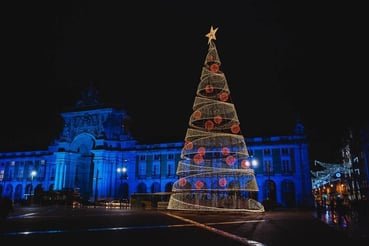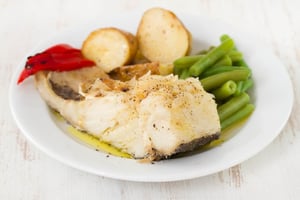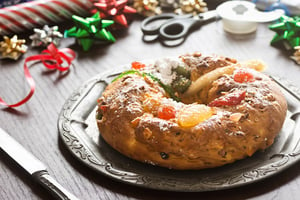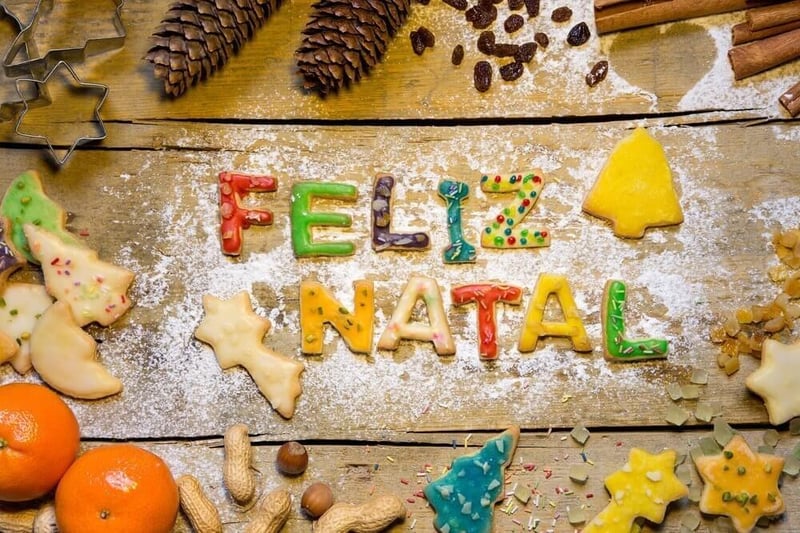Celebrating Christmas: Then and Now
Portugal has no official religion, but most of its population is Christian (81% Catholic). However, only about 19% attend mass and take the sacraments regularly. In Portugal, Church and State are formally separate, but the Catholic institution still has a strong influence, especially for the older population.
 Like other parts of the world, holidays like o NatalChristmas have gradually transformed from being purely religious to being more commercialized, cultural holidays, especially for the younger generations. Despite the growing commercialization and consumerism of the holiday, it is still possible to find some old traditions, especially in as aldeiasthe small towns, villages of Portugal.
Like other parts of the world, holidays like o NatalChristmas have gradually transformed from being purely religious to being more commercialized, cultural holidays, especially for the younger generations. Despite the growing commercialization and consumerism of the holiday, it is still possible to find some old traditions, especially in as aldeiasthe small towns, villages of Portugal.
In more recent years, the Portuguese have incorporated as árvores de Natalthe Christmas trees and Santa Claus imagery in their homes. Parents tell their children thato menino Jesusthe Baby Jesus helps Santa with as prendasthe presents . Families still set up o presépiothe nativity scene with Mary, Saint Joseph, the cow, donkey, the Three Kings, and baby Jesus. In the past, the Christmas tree was covered with chocolates, tied in a string. The figure of baby Jesus was only placed in o presépio after the family had attended a Missa do Galothe midnight mass (Mass of the Rooster) .
Christmas Eve Traditions
A ConsoadaChristmas Eve (dinner) is the time when the family gets together. For many families, this reunion can start days before, so everyone can pitch in with the preparations and cooking. You may find a Portuguese family using an embroidered linen tablecloth on the table passed down from previous generations, (and saved for special occasions), as well as using their finest plates, glasses, and velascandles .
 The meal of the ConsoadaChristmas Eve , often called a ceia de NatalChristmas supper , usually consists of bacalhaucodfish with potatoes, cabbage or green beans, all roasted in azeiteolive oil . The second course consists of rice with boiled polvooctopus . Sweets are served as a sobremesathe dessert , accompanied by vinho do PortoPort wine . And speaking of desserts, there is usually a huge variety for the family to choose from, including:
The meal of the ConsoadaChristmas Eve , often called a ceia de NatalChristmas supper , usually consists of bacalhaucodfish with potatoes, cabbage or green beans, all roasted in azeiteolive oil . The second course consists of rice with boiled polvooctopus . Sweets are served as a sobremesathe dessert , accompanied by vinho do PortoPort wine . And speaking of desserts, there is usually a huge variety for the family to choose from, including:
arroz docesweet rice with cinnamon
rabanadasfrench toast
broas de melhoney cakes
Later on, everyone gathers around to play games, or to share stories and conversation. In the past, the children would remove os pinhõesthe pine nuts from as pinhasthe pinecones that had been baking in a lareirathe fireplace . Traditionally, à meia-noiteat midnight before going to bed, the children would leave a small shoe beside the lareira or a chaminéthe chimney , so that the baby Jesus could leave one single, special present. Nowadays, the baby Jesus is replaced by Santa Claus, and the fireplace is replaced by the Christmas tree.
Other Christmas Traditions
Children open presents from Santa on the morning of the 25th. As for the kids who don’t believe in Santa Claus, they open presents given to them by their family at midnight on Christmas Eve. In more religious families, adults go to a Missa do Galothe midnight mass (Mass of the Rooster) . A Missa do Galo is celebrated at midnight, since according to tradition, that was the time Jesus was born. In Latin countries, this Mass is called the Mass of the Rooster, because a rooster sang at midnight, when Jesus was born.
On Christmas Day, Portuguese natives will usually visit friends and, especially, relatives. It’s a day of gathering and strengthening bonds, with both close and extended family. At lunch, it is common to eat a dish called a roupa velhathe old clothes made with the leftovers from the night before. Meat dishes are also common on Christmas Day, for both lunch and dinner. Of these, o peruthe turkey is one of the most popular and is usually prepared as a roast. In some homes, the turkey is stuffed with puré de castanhaschestnut puree . Of course, desserts are served again with many more docessweets !
Traditionally, families would recognize the 6th of January, when os três reis magosThe Three Kings arrived to visit baby Jesus. As the name implies, o bolo rei is named after them.
 This cake is a crown-shaped cake filled with candied fruits and pinhõespine nuts . It also contains a favaa big bean hidden inside, and whoever finds it has to buy next year’s cake.
This cake is a crown-shaped cake filled with candied fruits and pinhõespine nuts . It also contains a favaa big bean hidden inside, and whoever finds it has to buy next year’s cake.
After Christmas until January 6th, Portuguese take to the streets, going from home to home singing as Janeirasthe traditional January carols . These carols are meant to wish the audience good fortune and happiness in the Ano NovoNew Year .
We hope that you get a chance to experience some of these traditions for yourself in Portugal!
Also make sure to check out New Year’s Eve Traditions in Portugal, from Lesson 5 of “Christmas and the New Year”.






Hi ! I wonder if “consoada” and “véspera de Natal” can be used interchangeably? in the dictionary “consoada” seems to be referring to a meal.
Hi. Well, not quite, if we want to be technically correct 🙂 “Consoada” does refer to Christmas dinner, while “véspera de Natal” is the whole Christmas Eve. There is some overlap between the two, but they’re not fully interchangeable.
Obrigado Jo.
Eu ia fazer a mesma pergunta
Olá!
I have a question: why in the text it’s written ”as árvores DO Natal” but in one of the exercices there is a sentence ”Vamos montar a árvore DE Natal?” Is there a big difference in meaning or we can use them interchangeably?
Obrigada e Feliz Ano Novo!
Olá! I think it might’ve been a slip-up, because we typically say “árvore de Natal”. I’ve just updated the article, thanks 🙂